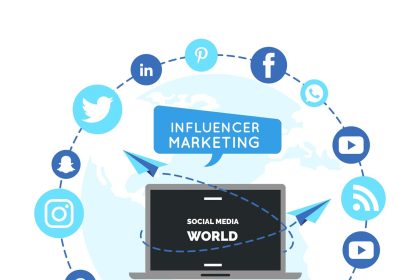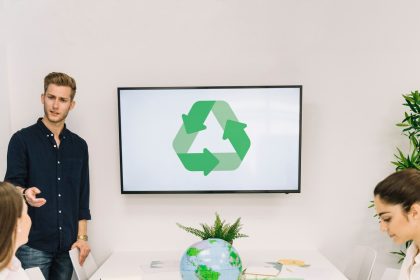In today’s fast-moving world, businesses are realizing something big: we need to protect our planet. Digital marketing—how companies sell stuff online—is changing to help. A fresh idea called Planet-First digital marketing is popping up everywhere. It’s about growing a business online while keeping the Earth safe. This article explains what it is, why it’s important, how it works, and what the numbers say. Let’s jump in with easy words and clear ideas.
What Is Planet-First Digital Marketing?
Planet-First digital marketing puts the environment first. It’s about using online tools—like websites, emails, and social media—to promote businesses without harming the planet. Instead of just chasing money or customers, it asks: How can we market smarter and greener?
Think about websites or ads. They use energy to run. Planet-First marketing finds ways to use less energy, like choosing clean power or cutting waste. It also encourages businesses to sell eco-friendly products and talk to customers about things like recycling or saving energy.
Why Does It Matter?
The planet’s in trouble—climate change, trash, and pollution are real issues. Businesses can make it worse or help fix it. Customers today care a lot about this stuff. A study found that 73% of people worldwide would switch to brands that help the environment (NielsenIQ, 2021). That’s huge! If companies don’t go green, they might lose out.
Digital marketing reaches tons of people. In 2024, over 5 billion folks used social media (Kepios, 2024). Planet-First marketing uses this to spread good ideas, not just sell stuff. Plus, it can save businesses cash by cutting energy use.
How Does Planet-First Digital Marketing Work?
Here’s how it happens in simple steps:
- Go for Green Web Hosting
Websites run on servers that need power. Companies like GreenGeeks use renewable energy—think wind or solar—to keep emissions low. The internet uses about 2% of global emissions today, and that’s growing (The Shift Project, 2019). Green hosting helps shrink that. - Slim Down Emails
Every email sent uses a bit of energy—around 4 grams of CO2 each (Carbon Literacy Project, 2020). Planet-First marketers clean up email lists and keep messages short to waste less. - Lighten Up Websites
Big websites with tons of pictures or videos take more energy to load. Tools like TinyPNG shrink images to make sites faster and greener. In 2024, 60% of web traffic came from phones (Statista, 2024), so light sites matter. - Push Green Products
It’s not just how you market—it’s what you sell. Businesses can use social media to show off sustainable stuff, like reusable cups or solar lights. Short videos on TikTok or Instagram are super popular—2 times more engaging than other posts (HubSpot, 2023). - Show Off Results
Track energy savings with tools like Google Analytics or carbon calculators. Sharing this builds trust. A study showed 66% of businesses saw better returns from green strategies (Deloitte, 2023).
The Numbers Tell the Story
Data proves this isn’t just a nice idea—it works. Here’s what we know:
- Customer Interest: About 46% of searches on Google tie to brand trust, and “sustainable” is a hot term (Google Trends, 2024). Green marketing gets clicks.
- Social Media Reach: With 5.17 billion users in 2024 (Kepios, 2024), platforms like Instagram are perfect for green campaigns. 80% of people check social media before buying (Sprout Social, 2023).
- Energy Impact: Digital tech could hit 8% of global emissions by 2025 if unchanged (The Shift Project, 2019). Small fixes, like lighter websites, cut that down.
- Money Talks: Email marketing gives back $42 for every $1 spent (Litmus, 2023). Green emails keep profits high and footprints low.
These stats show Planet-First marketing is smart business.
Real Examples in Action
Some brands are already doing it right:
- Patagonia’s Simple Site: Patagonia keeps their website light and promotes eco-clothing. In 2022, they made $1.2 billion while staying green (Patagonia, 2022).
- Lush’s Smart Emails: Lush sends short emails about plastic-free products, cutting their email emissions by 15% since 2020 (Lush, 2023).
- IKEA’s Green Tips: IKEA uses Instagram to share ideas like reusing furniture. Their posts reach millions, and 50% of marketers plan more content like this (HubSpot, 2023).
These wins show green marketing isn’t just talk—it pays.
Challenges to Face
It’s not all smooth sailing. Here’s what to watch:
- Upfront Costs: Green hosting or site fixes might cost more at first. Small businesses might wait, even if it saves later.
- Learning New Tricks: Not everyone knows how to track emissions. Tools like Carbon Footprint Calculator take practice.
- Keeping It Real: Some customers doubt green claims. Companies need to prove it with facts.
Still, the payoffs—happy customers and a cleaner planet—are worth it.
Easy Tips to Start
Want to try it? Here’s how:
- Start Small: Switch to green hosting or cut one email campaign.
- Ask Customers: Use social media to see what green ideas they like.
- Grab Free Tools: Check PageSpeed Insights to speed up your site.
- Be Open: Tell customers your green plans, even if they’re small.
What’s Next?
Planet-First marketing is here to stay. By 2030, digital marketing could be a $1 trillion industry (Statista, 2023), and green ideas will lead the way. AI might help track energy, and customers will push for more. 80% of marketers already use content to build trust (Content Marketing Institute, 2023), and adding a green spin makes it stronger.
Picture every ad or post helping the planet. That’s where we’re headed with Planet-First digital marketing.
Wrapping It Up
Planet-First digital marketing is simple: grow your business and help the Earth. Customers want it, numbers prove it, and it’s easy to start. From green hosting to eco-ads, every move helps. With billions online, it’s a chance to do good and do well. Why not make your next step a green one? The planet—and your bottom line—will love it.
References
Carbon Literacy Project. (2020). The carbon cost of an email. https://carbonliteracy.com/the-carbon-cost-of-an-email/
Content Marketing Institute. (2023). B2B content marketing benchmarks, budgets, and trends. https://contentmarketinginstitute.com/research/
Deloitte. (2023). 2023 sustainability and business report. https://www.deloitte.com/global/en/issues/sustainability.html
Google Trends. (2024). Search term: Sustainable. https://trends.google.com
HubSpot. (2023). The state of social media in 2023. https://www.hubspot.com/state-of-social-media
Kepios. (2024). Digital 2024: Global overview report. https://datareportal.com/reports/digital-2024-global-overview-report
Litmus. (2023). The state of email marketing 2023. https://www.litmus.com/resources/state-of-email-2023/
Lush. (2023). Sustainability report 2023. https://www.lush.com/sustainability/
NielsenIQ. (2021). The sustainability imperative. https://nielseniq.com/global/en/insights/report/2021/the-sustainability-imperative/
Patagonia. (2022). Annual report 2022. https://www.patagonia.com/annual-reports/
Sprout Social. (2023). Consumer insights 2023. https://sproutsocial.com/insights/data/
Statista. (2023). Digital marketing industry forecast. https://www.statista.com/topics/1910/digital-marketing/
Statista. (2024). Mobile internet traffic share. https://www.statista.com/statistics/303695/mobile-internet-traffic-share/
The Shift Project. (2019). Lean ICT: Towards digital sobriety. https://theshiftproject.org/en/lean-ict-towards-digital-sobriety/
















